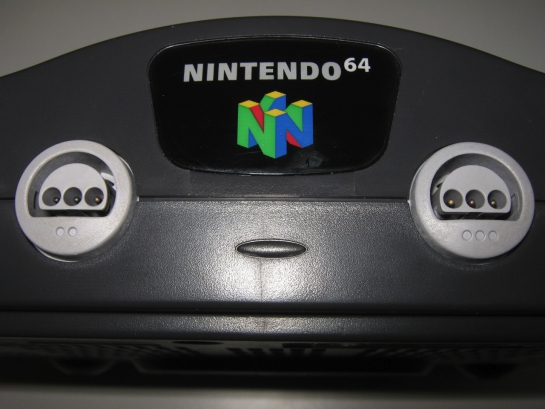
Autopsy:
from Wikipedia:
The Nintendo 64 (ニンテンドウ64 Nintendō Rokujūyon?), often referred to as N64, is Nintendo′s third home video game console for the international market.
Named for the 64-bit CPU, it was released in June 1996 in Japan, September 1996 in North America, March 1997 in Europe and Australia, September 1997 in France and December 1997 in Brazil. It is Nintendo′s last home console to use ROM cartridges to store games (Nintendo switched to a MiniDVD-based format for the successor GameCube); handhelds in the Game Boy line, however, continued to use Game Paks. It was discontinued in 2002 in Japan, North America and PAL regions by the launch of Nintendo′s GameCube.
The N64 was released with two launch games, Super Mario 64 and Pilotwings 64, and a third in Japan, Saikyō Habu Shōgi. The N64′s suggested retail price was US$199 at its launch and it was later marketed with the slogan “Get N, or get Out!”. The console was released in at least eight variants with different colors and sizes. An assortment of limited edition controllers were sold or used as contest prizes during the N64′s lifespan. The N64 sold 32.93 million units worldwide, and in 2009 it was named the 9th greatest video game console by IGN, out of a field of 25. The N64 was a very popular main prize on Double Dare 2000.
source: wikipedia
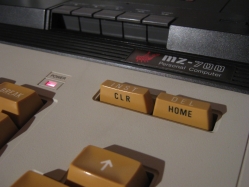
Autopsy:
from Old-Computers Museum homepage:
The Sharp MZ 700 series replaced the aging MZ 80 (MZ 80K, MZ 80A and MZ 80B) series. Moreover, the MZ 700 was compatible with the MZ 80K and MZ 80A. The MZ 700 series is composed of four machines: the first three models were launched in 1983 (November 1982 in Japan) and the last one was launched in late 1985 (in fact, this one is the “ancestor” of the MZ 800): MZ 711 was the “naked” model (without any peripheral).
Model description:
- MZ 721, has an integrated tape recorder
- MZ 731, has built-in plotter and tape recorder).
- MZ 780 which was actually a MZ 731 with a 80 columns card, a floppy disk drive and a Centronics port. It worked under CP/M.
There was no language in ROM (the ROM size is only 2 KB, it is just used for boot and OS calls), it has to be loaded from tape. So there was a lot of languages adapted for this machine (more than five versions of BASIC, assemblers, Pascal, Lisp, C, Fortran, Comal, Forth, & others). The games were a bit poor because of the low resolution (which was actually graphical characters), but there were 512 graphic characters in ROM, which can be used to offset it (sort of).
Later this model it will be replaced with the MZ 800.
source: old-computers.com wikipedia
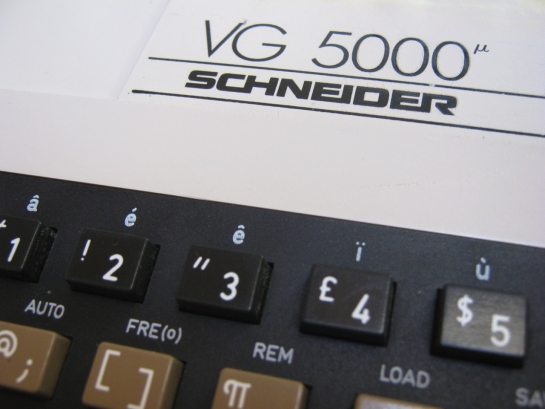
Autopsy:
from Old-Computers Museum:
Radiola and Schneider became Philips subsidiaries in 1990 when Philips bought the French Schneider TV assembly plant located in Le Mans – the West of France – and then named Radiotechnique (RTC). The Radiola, Schneider and Philips VG-5000 were exactly same machines, apart from the case colour. They were conceived and manufactured in the RTC Le Mans factory and only intended for the French market.
At the time, RTC also made the “Minitel”, a phone video terminal almost each French family owned. To save costs, the VG-5000 keyboard was thus taken from the Minitel and slightly altered. Several Philips computer were also sold under Radiola and Schneider names, among them, the VG-8000 and VG-8020. Although it was sold under three brand names, the VG-5000 didn’t sell well, because of its limited capacities, rare and expensive peripherals, and lack of good software.
source: old-computers.com vg5k.free.fr
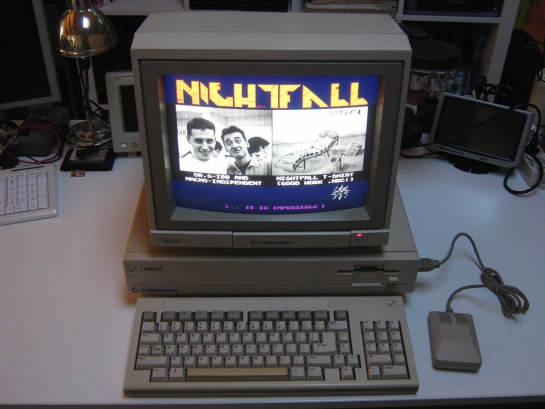
Autopsy:
Many years have passed since i sold my Amiga 1000 with Memory Expansion and Harddisk but with some patience and thanks to a friend i have found an Amiga 1000 in good condition for my RetroComputer museum.
As you can see from the photos i have changed the yellowed keyboard cover with a new one that was sold many years ago for Commodore spare parts.
from Wikipedia:
The A1000, or Commodore Amiga 1000, was Commodore’s initial Amiga personal computer, introduced on July 23, 1985 at the Lincoln Center in New York City. Machines began shipping in September with a base configuration of 256 kB of RAM at the retail price of 1,295 USD. A 13-inch (330 mm) analog RGB monitor was available for around 300 USD bringing the price of a complete Amiga system to 1,595 USD. Before the release of the Amiga 500 and A2000 models in 1987, the A1000 was simply called Amiga.
In the US, the A1000 was marketed as The Amiga from Commodore, however the Commodore logo was omitted from the casing. Additionally the Amiga 1000 was exclusively sold in computer stores, rather than the various non computer-dedicated department and toy stores the VIC20 and Commodore 64 were retailed in. These measures were an effort to avoid Commodore’s “toy-store” computer image created during the Tramiel era.
The A1000 had a number of characteristics that distinguished it from later Amiga models: It was the only model to feature the short-lived Amiga “checkmark” logo on its case; the case was elevated slightly to give a storage area for the keyboard when not in use (a “keyboard garage”); and the inside of the case was engraved with the signatures of the Amiga designers (similar to the Macintosh), including Jay Miner, and the paw print of his dog Mitchy. The A1000′s case was designed by Howard Stolz As Senior Industrial Designer at Commodore, Stolz was the mechanical lead and primary interface with Sanyo in Japan, the contract manufacturer for the A1000 casing.
source: wikipedia
Sorry, this entry is only available in Italian.
 Some new games (Cracked / Trained or Unrealeased) for Commodore 64 have been released from your favorites groups: Laxity, ElfKaa, Genesis Project and Dinasours.
Some new games (Cracked / Trained or Unrealeased) for Commodore 64 have been released from your favorites groups: Laxity, ElfKaa, Genesis Project and Dinasours.
Download:
source: csdb.dk]
 Name: Complete Realms of Quest Trilogy…and the entire System IIII Collection
Name: Complete Realms of Quest Trilogy…and the entire System IIII Collection
Author: Ghislain
Released: April 8, 2012
Requirements: for Windows +VICE Emulator
Description: I’ve decided to publicly release my entire collection of VIC-20 games into a single zip archive. This also includes the full commercial version of Realms of Quest III that was released in 2009. Included with these is the VIC-20 VICE Emulator for convenience along with instructions.
The following games are included in the collection:
Break-Fast (1988)
Haunted House (1990)
Dunjon Master (1990)
Worm-Out II (1990)
Paratrooper (1990)
Ringside Wrestling (1990)
Realms of Quest I (1991)
Realms of Quest II: Pre Demo (1993)
Monkey Kong (1993)
Vicfall! (1993)
Ice Hockey (1996)
Meteor Zone (1996)
Ringside Boxing (1996)
Vicfall II (1996) |
Dunjon I & II (2003)
Vicside Boxing (2004)
Realms of Quest II (2004)
Realms of Quest II: Special Edition (2006)
Napoleon Simulator (2006)
Realms of Quest II: Mega-Cart Edition (2007)
Realms of Quest III (2009)
Realms of Quest III: Dunjon Crawler (2009)
Theater of War I (2010)
Face VS Heel (2010)
Realms of Quest I & II: Anniversary Ed. (2011)
Theater of War II: The Pacific (2011)
Theater of War III: Western Front 1918 (2011) |
Download: Complete Realms of Quest Trilogy & System IIII Collection (1594)
source: sleepingelephant.com
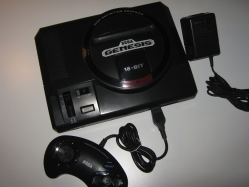
Autopsy:
from Wikipedia:
The Sega Genesis is a fourth-generation video game console developed and produced by Sega. It was originally released in Japan in 1988 as Mega Drive (メガドライブ Mega Doraibu?), then in North America in 1989 as Sega Genesis, and in Europe, Australia and other PAL regions in 1990 as Mega Drive.
The reason for the two names is that Sega was unable to secure legal rights to the Mega Drive name in North America. The Sega Genesis is Sega’s third console and the successor to the Sega Master System with which it has backward compatibility when the separately sold Power Base Converter is installed.
The console was released in Japan as Mega Drive on October 29, 1988. Sega announced a North American release date for the system (as Sega Genesis) on January 9, 1989. Sega initially attempted to partner with Atari Corporation for distribution of the console in the US, but the two could not agree to terms and Sega decided to do it themselves. Sega was not able to meet the initial release date and US sales began on August 14, 1989 in New York City and Los Angeles. The Sega Genesis was released in the rest of North America later that year on September 15, 1989 with the suggested retail price of $189.99, $10 less than originally planned, and also $10 less than the competing TurboGrafx-16.
The Mega Drive’s CPU is a 16/32-bit Motorola 68000. The maximum addressable memory is 16 MB from the ROM ($00000000-00400000 – 4 MB), to the RAM ($00FF0000-00FFFFFF – 64 KB). The 68000 runs at 7.61 MHz in PAL consoles, 7.67 MHz in NTSC consoles. The Mega Drive also includes a Zilog Z80, which serves as secondary processor along with allowing complete Master System compatibility with only a passive adapter. The initial Mega Drive models used a Hitachi-made HD68HC000, while the Mega Drive 2 and later models used a Motorola MC68HC000, both fabricated in CMOS.
source: wikipedia
 The party is organized by Maciej Grzybek also known as Grzybson/SSG. It is taking place form 3th May to 6th May 2012 in Częstochowa.
The party is organized by Maciej Grzybek also known as Grzybson/SSG. It is taking place form 3th May to 6th May 2012 in Częstochowa.
This is the Official Party Reports.
Game Compo:
- 1 Gówno spadające w dół / Koala&Cedyń
- 2 Realistic Internet Simulator / Nosty
- 3 Snakes On the Atari Island / JKR&Paptak
- 4 Tedecujące Starcie / TDC
- 5 Order It / Xeen
- 6 Błękitne Nimfy / Sikor
- 7 Bored a bit / Sikor
Wild Compo:
- 1 Diabelska Pomyłka (Atari Portfolio) / Cosi + Innuendo
Download: Grzybsoniada 2012 party stuff (1049)
source: Grzybsoniada homepage
![Trance Sector Pre +2M / Arcade Compo #2 [EF] / Slicker ...](https://www.nightfallcrew.com/wp-content/uploads/2012/05/c64_08_05_2k12-300x225.png?76c919) Some new games (Cracked / Trained or Unrealeased) for Commodore 64 have been released from your favorites groups: Nostalgia, Genesis Project, The New Dimension, TRIAD and Onslaught.
Some new games (Cracked / Trained or Unrealeased) for Commodore 64 have been released from your favorites groups: Nostalgia, Genesis Project, The New Dimension, TRIAD and Onslaught.
Download:
source: csdb.dk
 This utility written in Python is for create your own Kernal (Original Kernal) for Commodore 64. The customizations are made by editing the script written in python.
This utility written in Python is for create your own Kernal (Original Kernal) for Commodore 64. The customizations are made by editing the script written in python.
Possible customizations:
- Border color.
- Background color.
- Font color.
- Key repeat speed/delay.
- Power up message.
Download: Lame-o-kernal v0.1 (946)
source: noname.c64.org/csdb
 This utility written in Python (requires at least python v2.8) is for create your own tape loader for your game (up to 44 KB/173 Blocks) including loading tune, loading pic and scrolltext + charset.
This utility written in Python (requires at least python v2.8) is for create your own tape loader for your game (up to 44 KB/173 Blocks) including loading tune, loading pic and scrolltext + charset.
Download: TAPgen v0.1 (942)
source: noname.c64.org/csdb
 JS VIC-20 is a Javascript emulator of the Commodore VIC-20, made by Matt Dawson.
JS VIC-20 is a Javascript emulator of the Commodore VIC-20, made by Matt Dawson.
This emulator works best with the latest Chrome or Firefox browsers. Changes in this version Full-screen support. New debug screen with VIC and VIA info. Edit or view a Basic or machine-code program. Choice between 100% speed or no-limit. Datassette emulation (Load) with support for TZX, CSM and PRG files.
source: commodore-gg.hobby.nl
![Hot Wheels +2D [EF] / Purple Turtles HS / Battlefront ...](https://www.nightfallcrew.com/wp-content/uploads/2012/05/c64_05_05_2k12-300x225.png?76c919) Some new games (Cracked / Trained or Unrealeased) for Commodore 64 have been released from your favorites groups: Nostalgia, Genesis Project, The Hidden Farts, TRIAD and Laxity.
Some new games (Cracked / Trained or Unrealeased) for Commodore 64 have been released from your favorites groups: Nostalgia, Genesis Project, The Hidden Farts, TRIAD and Laxity.
Download:
source: csdb.dk
In the gallery you can found some Sega Megadrive (Genesis) games Cartridges and the famous Honey Bee adaptor. The Cartridge adaptor which enables the playing of import Japanese and Genesis games on a PAL Sega Mega Drive.



















































































![Trance Sector Pre +2M / Arcade Compo #2 [EF] / Slicker ...](https://www.nightfallcrew.com/wp-content/uploads/2012/05/c64_08_05_2k12-300x225.png?76c919)



![Hot Wheels +2D [EF] / Purple Turtles HS / Battlefront ...](https://www.nightfallcrew.com/wp-content/uploads/2012/05/c64_05_05_2k12-300x225.png?76c919)






Recent Comments